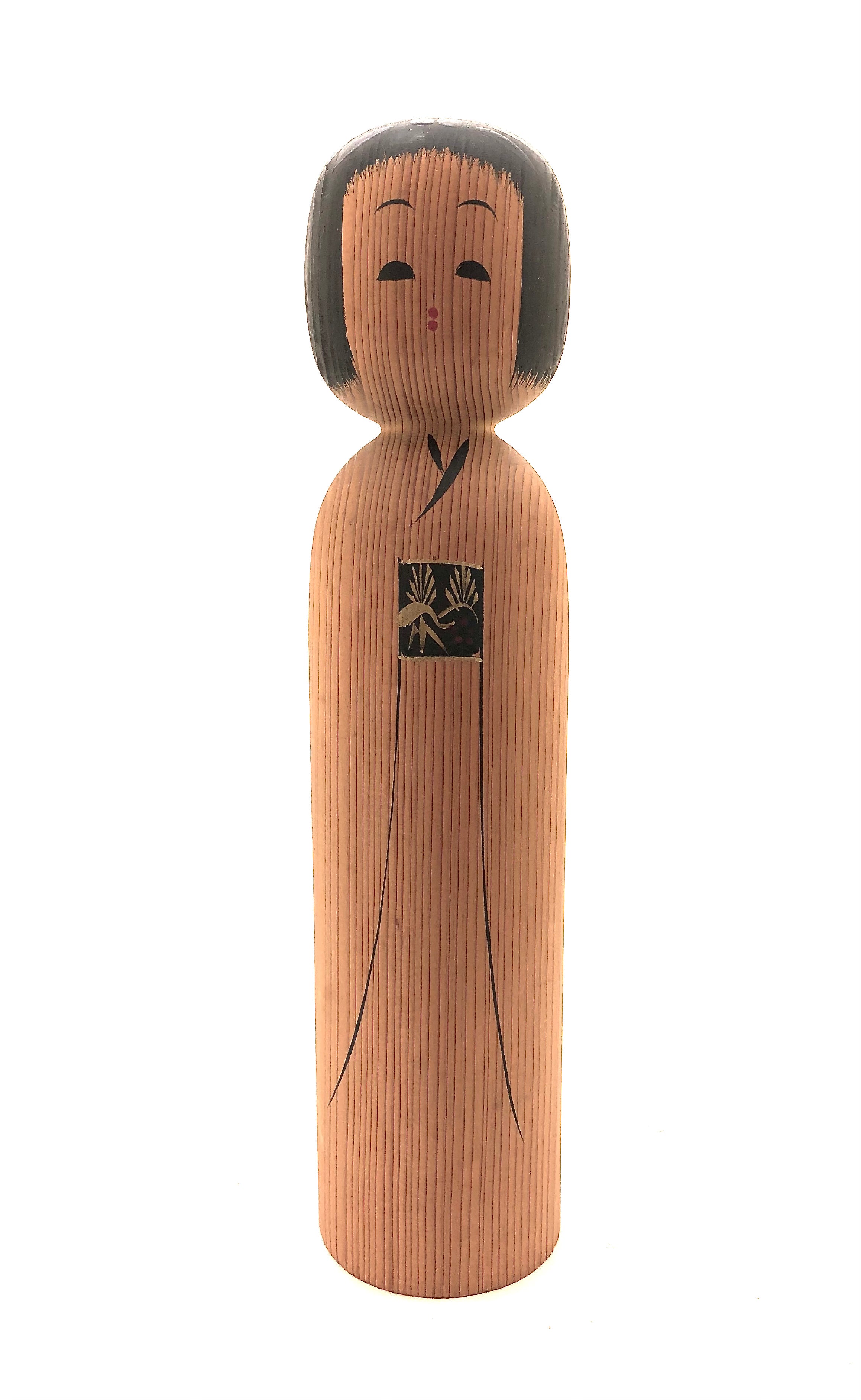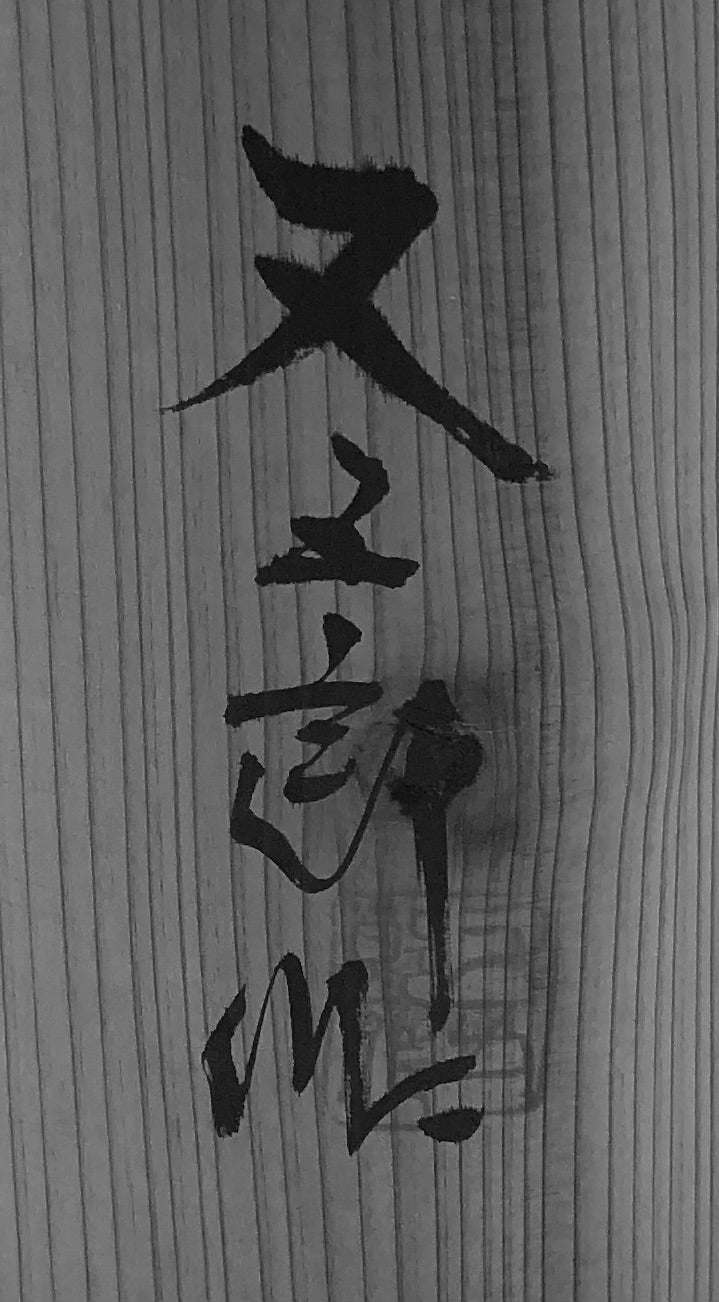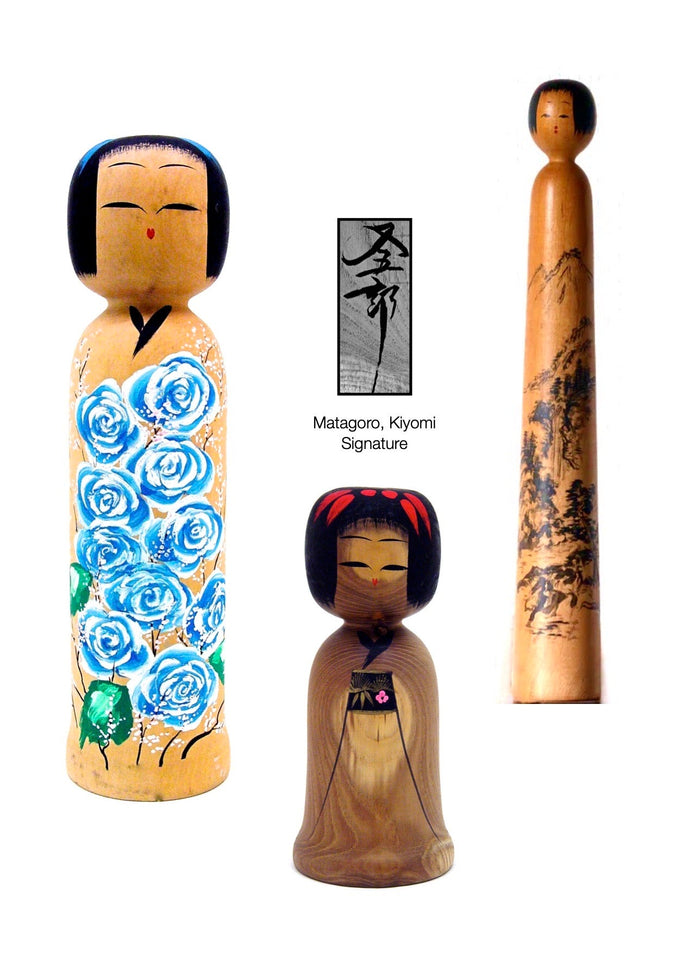

Vintage Sosaku Kokeshi Entitled, “Good Luck Maiden | Sho-Chiku-Bai” by Matagoro, Kiyomi, 9th Generation
Dimensions: 12-0”h
This Kokeshi was made by 9th generation Matagoro, Kiyomi, who is known as the ‘Sho-Chiku-Bai’ Kokeshi maker. The wood used in both his grandfather’s dolls as well as his creations, was harvested Sugi, (Cedar), in the mountains of Nangai-cho in the Akita Prefecture. He and the other Matagoro craftsmen were highly-skilled carvers who enjoyed working with ‘Sugi’, as it was an aromatic, soft wood with a very visible grain. This doll is lathe-turned, as opposed to earlier generations who carved/chiseled dolls, (because of the wood being too soft, and they appreciated the chiseled effect that texturized the earlier pieces). The aesthetic difference of this doll is that the suggestion of the Kimono is usually a simple line. Its face shows the ‘Bob’ hairstyle with arched eyebrows and simple black eyes, with two dots representing the mouth. In this version he added the three symbols of ‘Sho-Chiku-Bai’ to highlight the abstract obi. The piece is hand scribed on the back with his red impressed stamp.
Condition: Excellent, original condition, with no fading or loss of color and consistent with age. The piece meets all the standards of collectible Folk Art.

Artisan
Woodworker: Matagoro, Kiyomi
Biographical History:
Matagoro, Kiyomi is a woodworker and artisan who created Kokeshi dolls beginning in the 1970s-80s. She is a member of the Matagoro workshop, a lineage of sculptors that dates back to the late 18th century. Kiyomi-san was several of the craftsmen who pursued a goal: to celebrate Mt. Nangai-cho (Akita prefecture) and the woodworking handicrafts. All the variation of the Matogoro Kokeshi shows a very stripped-down doll shape. Made of very soft wood, which her doll's bodies were sanded as opposed to the earlier generations. Later Kokeshi breaks from the Matagoro tradition and appears very traditional in overall appearance with a variety of motifs and subject matter.
Collector's note – descriptive qualities, standard characteristics & ornamentation styles:
The first of three of Kiyomi’s Kokeshi is rendered in Blue, a very uncommon color, and is seldom used on a Kokeshi doll. Her Kokeshi entitled “Ao Bara | Blue Rose” is rare because it is made of Kiriwood, (Pine), and not Cedar which breaks family tradition of the preferred material. The multiple layering of the blue roses is stylistically executed in combination with cherry blossoms in the background. This doll represents the beginning of her break from the traditional Matagoro doll and the use of Cedar.
The second doll is entitled “Sho-Chiku-Bai | Good Luck”. As with the first, both are lathe-turned-dolls. This particular Kokeshi is in a more traditional bell shape, i.e., Nemariko style, having the Kimono enhanced by the natural wood graining. The obi depicts the three symbols of ‘Sho-Chiku-Bai’. The hair is starkly black with red highlights. This doll is made of Cedar, celebrating family tradition. This doll is more contemporary based in the rendering of its face and hairstyle with contemporary colorations.
Finally, the third tall and tapered slender doll on the right steps out of all the various formats and motifs of the originals with one exception, it has a beautiful drawing celebrating the original basis for this doll and that is honoring Mt. Namgai-cho landscape with the surrounding waterfall.
Explore & Learn More about Woodworker: Matagoro, Kiyomi
